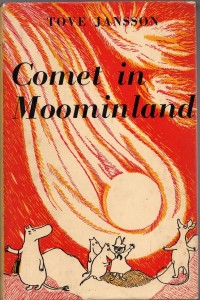Archive for the ‘Children’s Books’ Category
Friday, November 4th, 2022
Never open a book with weather.– Elmore Leonard (10 Rules For Writing)
The best opening sentences in novels grab the reader immediately – they introduce character, setting and problem; fire the imagination; and the action is clear:
Give your readers as much information as possible as soon as possible. Readers should have such complete understanding of what is going on … that they could finish the story themselves, should cockroaches eat the last few pages.– Kurt Vonnegut
(Vonnegut’s Breakfast of Champions begins, “This is a tale of a meeting of two lonesome, skinny, fairly old white men on a planet which was dying fast.”)
My favourite opening is from Charlotte’s Web by E. B. White, deftly introducing people, place, and problem in one sentence:
“Where’s Papa going with that axe?’ said Fern to her mother as they were setting the table for breakfast.
Test Yourself
Match these classic openings from children’s novels to the titles below.
1. All children, except one, grow up.
2. There was a boy called Eustace Clarence Scrubb, and he almost deserved it.
3.The Iron Man came to the top of the cliff.
4. Here I am, Ralph William Mountfield, banished to my bedroom on Christmas Day.
5. Keith the boy in the rumpled shorts and shirt, did not know he was being watched as he entered Room 215 of the Mountain View Inn.
6. My father is put in the stocks again! Oh! the injustice of it!
7. When Old Tip lost his bark, Uncle Trev had to teach his horse to bark and chase the cows up to the shed for milking.
8. It’s a funny thing about mothers and fathers. Even when their own child is the most disgusting little blister you could ever imagine, they still think that he or she is wonderful.
9. I write this sitting in the kitchen sink.
Titles in random order: The Iron Man, I Capture The Castle, The Voyage of the Dawn Treader, The Mouse and the Motorcycle, Devil-in-the-Fog, Matilda, The More the Merrier, Uncle Trev, Peter Pan
More: Advice for writing an effective opening (Jacob Appel).
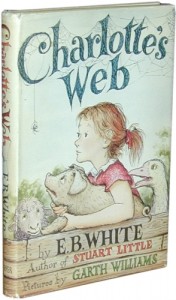
Tags: children's books, E B White, writing
Posted in Children's Books, Writing | 2 Comments »
Sunday, July 10th, 2022
“The idea of the extraordinary happening in the context of the ordinary is what’s fascinating to me.” – Chris van Allsburg
Picture books by Chris van Allsburg are not only beautifully illustrated, the stories are wide open for wide interpretation, which makes them ideal for children. It’s impossible to look at the pictures in Harris Burdick without imagining a story. My other surreal favourites are Bad Day at Riverbend, about a black and white cowboy town attacked by colourful crayons – and The Wretched Stone, about a strange glowing stone which makes the people regress intellectually (TV and digital screens perhaps?).
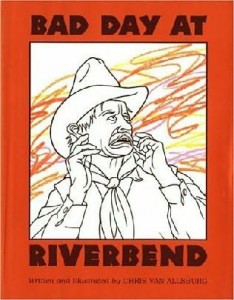
Tags: books, children's books, picture books, reviews
Posted in Book Reviews, Children's Books | No Comments »
Tuesday, May 3rd, 2022
A book needs us desperately. We have to pull it off the shelf. We have to open it up. We have to turn the pages, one by one. We even have to use our imagination to make it work. So, suddenly, that book is not just a book; it’s our book. – Mo Willems
The pictures are not very defined because one wants to be able to have the imagination playing over them. – Quentin Blake
Because they have so little, children must rely on imagination rather than experience. – Eleanor Roosevelt
“I could be bounded in a nutshell, and count myself a king of infinite space…”— Shakespeare (Hamlet)
Image: Two merging galaxies, from NASA’s Spitzer and Hubble Space Telescopes. (Credit: NASA, ESA/JPL-Caltech/STScI/D. Elmegreen (Vassar)

Tags: children's books, writing
Posted in Children's Books, Writing | 3 Comments »
Sunday, March 27th, 2022
Perhaps it is only in childhood that books have any deep influence on our lives. – Graham Greene
In a world that offers children so many digital delights, why bother with books?
1. Books help children understand the world
Books expose children to new ideas and help shape their world view – reading is a meeting of minds.
While reading, we can leave our own consciousness, and pass over into the consciousness of another person, another age, another culture – Maryanne Wolf
2. Books help children understand themselves
Stories give a frame of reference by which they can measure their experiences and feelings.
We read books to find out who we are. – Ursula K Le Guin
3. Books develop children’s imagination
Reading is imagination, and imagination enriches the real world.
Children do not despise real woods because they have read of enchanted woods; the reading makes all woods a little enchanted. – C.S. Lewis
4. Books develop children’s brains
Books boost a child’s intellectual development. The brain changes when children learn to read: it creates new neural pathways….reading and thinking enhance each other.
5. Books are enjoyable.
Ultimately a child must want to read. The child who reads for pleasure is forming a wonderful habit – and there’s also pleasure for parents in reading aloud.
See also: Guide To Best Books For Children
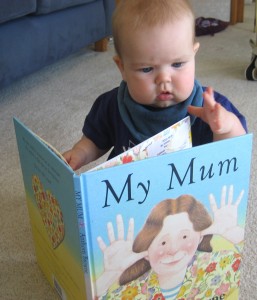
Tags: books, children's books, Reading, science
Posted in Children's Books, Reading, Science | No Comments »
Sunday, August 8th, 2021
The Little Prince (1943) by Antoine de Saint-Exupéry is a fable about a pilot who crashes in the desert and meets a wise child. It’s one of the world’s most translated books (in 250 languages) and it has parhaps the most intriguing sentence in all of children’s literature:
What is essential is invisible to the eyes.
What is ‘essential’? Is it truth, love, spirit, mystery? These are the questions the story evokes. Saint-Exupéry was a pilot who also wrote great adventure books (eg. Wind, Sand and Stars ).
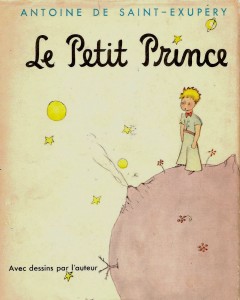
Tags: children's books, consciousness, reviews
Posted in Book Reviews, Children's Books | No Comments »
Sunday, May 30th, 2021
Five years old, terrified on my first day at school. I sat on the mat and the teacher read Horton Hatches the Egg by Dr Seuss. I was so engrossed I didn’t notice my mother slip out. Horton the faithful elephant helped me get through that day.
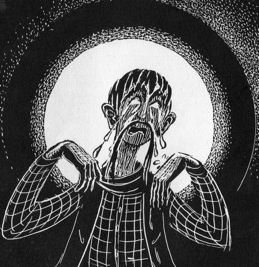 Six years old, and absorbed in a cowboy adventure, Calico the Wonder Horse by Virginia Lee Burton. Gripped by this image of the Stewy Stinker crying in remorse for his wickedness – aware of my own failings perhaps.
Six years old, and absorbed in a cowboy adventure, Calico the Wonder Horse by Virginia Lee Burton. Gripped by this image of the Stewy Stinker crying in remorse for his wickedness – aware of my own failings perhaps.
Seven years old, and Tintin was my role model for courage and integrity. His stories introduced me to sci-fi and humour, history and politics.
Eight years old, and The Phantom Tollbooth by Norton Juster opened the world of word-play to me.
Nine years old, and I devoured Willard Price’s books – pulp adventures with erupting volcanoes, balloon rides and killer anacondas. I wanted to write books as exciting.
Ten years old, on the ultimate journey with a small hero facing the monstrous Smaug. The Hobbit kindled my imagination more than any other book. It was, as Tolkien said,
‘an escape to a heightened reality- a world at once more vivid and intense.’
Here’s the 1966 version that I once owned, with a cover drawing by Tolkien (link to all Hobbit covers).
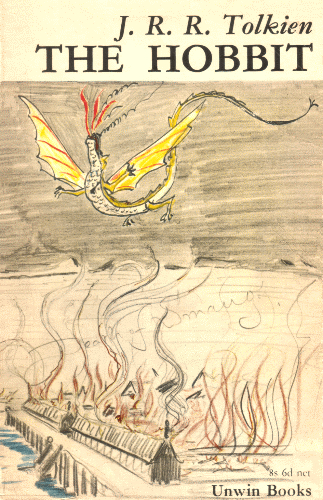
Tags: children's books, tolkien
Posted in Children's Books | No Comments »
Saturday, April 10th, 2021
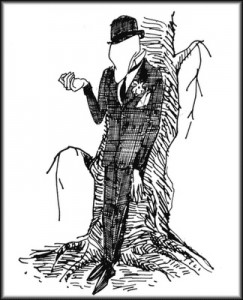 More than any book I read as a child, The Phantom Tollbooth by Norton Juster (who died recently), gave me a love of words – it puns them, pushes them, and plunders their meaning. It’s overflowing with inventiveness: the man who is short, tall, thin and fat, at the same time; an orchestra that plays colours; a city that disappears because nobody cares. And I love the illustrations by Jules Feiffer, such as the faceless timewaster, The Trivium, who has this message for writers:
More than any book I read as a child, The Phantom Tollbooth by Norton Juster (who died recently), gave me a love of words – it puns them, pushes them, and plunders their meaning. It’s overflowing with inventiveness: the man who is short, tall, thin and fat, at the same time; an orchestra that plays colours; a city that disappears because nobody cares. And I love the illustrations by Jules Feiffer, such as the faceless timewaster, The Trivium, who has this message for writers:
What could be more important than doing unimportant things? … There’s always something to do to keep you from what you really should be doing.
The story is about a child’s quest to overcome boredom. It’s told with imagination, wit, and wisdom — what more could you want in a children’s book?
I had been an odd child: quiet, introverted and moody. Little was expected from me. Everyone left me alone to wander around inside my own head. When I grew up I still felt like that puzzled kid — my thoughts focused on him, and I began writing about his childhood. – Norton Juster
Tags: children's books, humour, writers, writing
Posted in Children's Books, Writing | No Comments »
Wednesday, April 1st, 2020
Draw to live; live to draw – Wanda G’ag
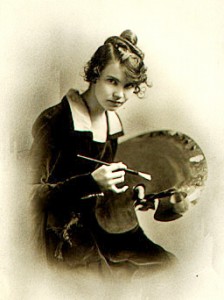 Meet Wanda G’ag (it rhymes with blog) one of the finest children’s book illustrators. Her masterpiece is Millions of Cats (1928) the story of a lonely old couple who attract ‘millions and billions and trillions of cats‘. The pictures roll like waves across the pages; clouds, trees, hills, and cats all swept along in the flow of the story. The black and white gives it a slightly unsettling folktale vibe. As a child I loved the army of cats drinking a pond in seconds, and the final catastrophic cat-scrap. And try to find her bizarre but cute book Nothing At All, about an invisible dog.
Meet Wanda G’ag (it rhymes with blog) one of the finest children’s book illustrators. Her masterpiece is Millions of Cats (1928) the story of a lonely old couple who attract ‘millions and billions and trillions of cats‘. The pictures roll like waves across the pages; clouds, trees, hills, and cats all swept along in the flow of the story. The black and white gives it a slightly unsettling folktale vibe. As a child I loved the army of cats drinking a pond in seconds, and the final catastrophic cat-scrap. And try to find her bizarre but cute book Nothing At All, about an invisible dog.
Tags: children's books, picture books, writers
Posted in Children's Books | No Comments »
Sunday, March 1st, 2020
It was 1963, and I was terrified on my first day at school. I sat on the hard grey carpet mat, and the teacher read Horton Hatches the Egg to the class. I became so engrossed I didn’t even notice my mother slip out. That loyal elephant helped me get through that watershed day without too many waterworks. Soon I had other beloved Seuss friends at school including the Pale Green Pants and the Zizzer Zazzer Zuzz. Seuss thrived on the constraints of the English language – for Green Eggs and Ham he was given a 50 word vocabulary list to work with, and created a classic. And take heart writers, his first book was rejected 27 times.
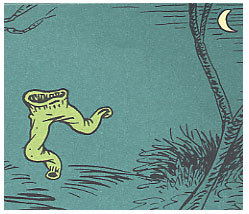
Tags: children's books, picture books, Seuss
Posted in Children's Books | No Comments »
Saturday, November 30th, 2019
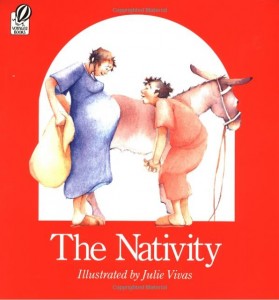 The Nativity, illustrated by Julie Vivas, is my favourite children’s Christmas book. The pictures convey the humanity of the story by showing the love between Mary and Joseph, the pregnancy and birth, within a rustic setting. Oddly, it all sits well with the poetic language of the 17th century King James version of the Bible. Vivas also illustrated the wonderful book for babies, I Went Walking.
The Nativity, illustrated by Julie Vivas, is my favourite children’s Christmas book. The pictures convey the humanity of the story by showing the love between Mary and Joseph, the pregnancy and birth, within a rustic setting. Oddly, it all sits well with the poetic language of the 17th century King James version of the Bible. Vivas also illustrated the wonderful book for babies, I Went Walking.
Tags: children's books, picture books, reviews
Posted in Book Reviews, Children's Books | No Comments »
Sunday, November 3rd, 2019
Everything in the tales appears to happen by chance – and this has the strange effect of making it appear that nothing happens by chance, that everything is fated. – A. S. Byatt
One of the appeals of the 200 year old tales of the Brothers’ Grimm is how random events seem connected (read Byatt’s essay here). They are stories of generic princesses, simpletons, brothers and sisters who meet with good or bad ‘luck’ on their quest, yet are bound by the rules of the fairy tale world – life has a kind of guided randomness, but usually with a happy ending. Perhaps this is the way children see the world: capricious, a little scary, but ultimately, a hopeful place.
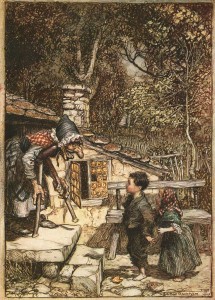
When I was a child I loved how the Grimm’s characters met the forces of their fickle world with kindness and cunning. I’d lay in bed and delight in Danny Kaye’s reading of Clever Gretel on Sunday morning radio. The illustration above is by the great Arthur Rackham (see more on Brain Pickings).
Fairy tales are more than true; not because they tell us that dragons exist, but because they tell us dragons can be beaten.– G.K. Chesterton
Tags: children's books, fairy tales, Grimm
Posted in Children's Books | No Comments »
Saturday, August 31st, 2019
Dae they no ken that Tintin’s in danger?
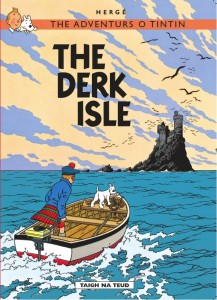 The Derk Isle is the first Tintin book to be translated into the Scots language (which is over 1000 years old and is still spoken) and it works a wee treat. Familiarity with the original, The Black Island (1938), adds to the fun but most readers will easily understand the Scots (it’s best read aloud). Among the delightful phrases: ‘dinna fash’ (don’t worry), ‘whit a scunner’ (what a nuisance), and ‘blackbelickit’ (drat). Snowy becomes Tarrie (terrier) and the Thompson twins are Nesbit and Nesbit.
The Derk Isle is the first Tintin book to be translated into the Scots language (which is over 1000 years old and is still spoken) and it works a wee treat. Familiarity with the original, The Black Island (1938), adds to the fun but most readers will easily understand the Scots (it’s best read aloud). Among the delightful phrases: ‘dinna fash’ (don’t worry), ‘whit a scunner’ (what a nuisance), and ‘blackbelickit’ (drat). Snowy becomes Tarrie (terrier) and the Thompson twins are Nesbit and Nesbit.
“He’s a fair wunner, is wee Tarrie. There’s no a dug like him for snowkin efter crooks!”
“Oot ye get! An nae joukery-pawkery, mind!”
Tags: children's books, comics, Tintin
Posted in Book Reviews, Children's Books | No Comments »
Sunday, June 30th, 2019
Sylvester and the Magic Pebble by William Steig is a picture book about a child’s fear of separation; it won the Caldecott Medal in 1969. The brilliantly absurd plot has Sylvester the young donkey trapped inside a rock while his parents search frantically for him. It’s Steig’s version of his favourite book, Pinocchio, about a boy trapped inside a piece of wood. The ending is typical Steig: the child reunited with loved ones in with hugs and tears – when he was 15 years old, young William ran away to sea after an argument with his father:
When I finally got home, my mom and dad hugged and kissed me and we all cried. We were a very emotional family.
Read more about Steig and his life-affirming books.
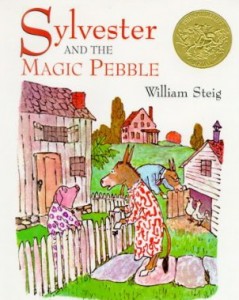
Tags: children's books, picture books, steig
Posted in Children's Books | No Comments »
Saturday, June 1st, 2019
Far from being a means to escape the social world, reading stories can actually improve your social skills by helping you better understand other human beings. – Keith Oatley (The Psychology of Fiction)
That master of imagination, J.R.R. Tolkien, said that fantasy “offers not an escape away from reality, but an escape to a heightened reality”. When we read any fiction we enter an imaginary world, but it’s the characters that we attach to most of all. When our emotions are triggered by the characters, that’s when we get an understanding of real life relationships. Children develop empathy for others from about 4 years old – and hearing and reading fiction enables them to walk in another’s shoes. Another great reason for reading to children!
While reading, we can leave our own consciousness, and pass over into the consciousness of another person, another age, another culture. – Maryanne Wolf
Picture from a book about feelings: Bravo by Philip Waechter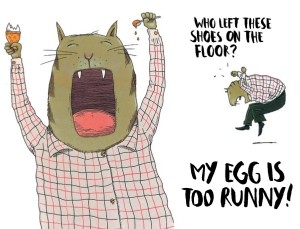
Tags: brain, Reading, tolkien
Posted in Book Reviews, Children's Books, Reading, Science | No Comments »
Saturday, February 2nd, 2019
Ferdinand (1936) by Munro Leaf is one of the most influential children’s books because of its simple but powerful theme. The tale of a bull who likes to smell flowers instead of fighting was seen as a pacifist text at the time of the Spanish Civil War.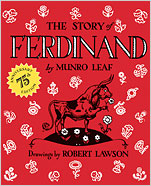 Ferdinand chooses to be himself rather than follow the aggressive crowd. No wonder the book was:
Ferdinand chooses to be himself rather than follow the aggressive crowd. No wonder the book was:
Read the true story of the bull who inspired it: The Marginalian.
Munro Leaf also wrote books which reflected the stricter child-raising style of his time. 3 and 30 Watchbirds (1941) condemns children’s behaviours such as shoe-scuffing, mumbling, moaning, fidgeting, and wasting food. Some of it’s in the spirit of war-time frugality, but some is just plain excessive:
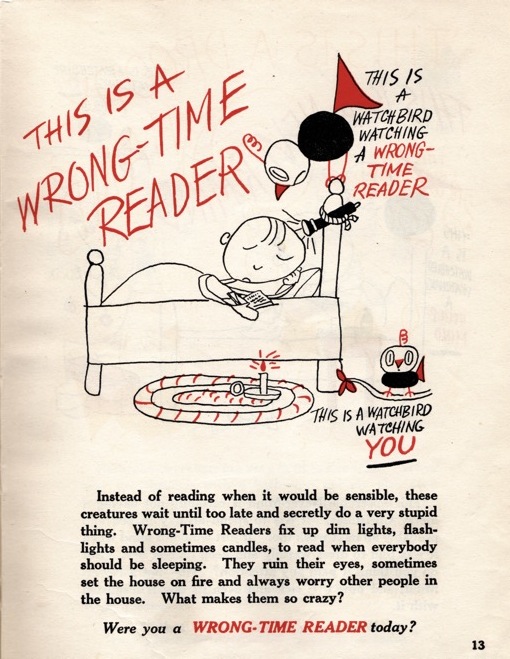
Grammar Can Be Fun is slightly more tongue-in-cheek and warns children against slack language such as “gimme, wanna, gonna, and ain’t”.
Tags: children's books, classics, Peace, picture books
Posted in Book Reviews, Children's Books, Peace | No Comments »
Saturday, January 5th, 2019
Hergé was a master of evoking atmosphere. Think of Professor Tarragon’s house in The Seven Crystal Balls: the building storm, the heat leading to the burst tyre, the gust of wind as depicted by a slender tree against a slate-grey sky, the sinister mummy in his cabinet, the ball lightning, Tintin’s nightmare – such a feeling of supernatural dread evoked by a confluence of natural events.
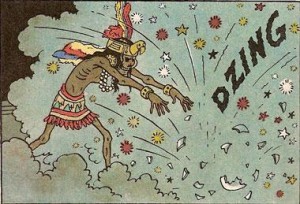
Despite the cinematic quality of Hergé’s stories, Tintin’s true home is in the comic book medium. He occupies a space at a perfect level of abstraction, real enough to evoke our world, pared back enough to activate the imagination. – Hugh Todd
Read the whole the interview with comic artist, Hugh Todd: My Dinner With Herge
Tags: children's books, comics, Reading, Tintin
Posted in Children's Books | No Comments »
Saturday, December 1st, 2018
1. Have plenty of books available.
Access to books is the key – books help children learn. Love your local library!
2. Read aloud.
- start a book together and let the child finish it,
- children read to a pet,
- have a family read-athon.
The amount of time the child spends listening to parents and other loved ones read continues to be one of the best predictors of later reading. – Maryanne Wolf
3. Find the best books.
Children can’t resist great books, such as:
4. Match books to children’s interests.
Whatever they want to read – comic books, science, or monsters – they probably need it. Librarians love to help you find the right book.
You need a top story. You need a subject that interests a child. And you need something that they can read. – Paul Jennings
5. Interact with books.
- write to the author,
- dress up as characters,
- create book artwork,
- write a book.
Tags: children's books, Reading
Posted in Children's Books, Reading | No Comments »
Monday, September 3rd, 2018
Stories tend to get out of hand– Tolkien
Reading Humphrey Carpenter’s wonderful J.R.R. Tolkien – A Biography. The story of his early life and evolution of his stories is fascinating. Some quirky influences on Tolkien’s writing:
- The toddler Tolkien attacked by a terrifying tarantula in South Africa (1895)
- Tolkien’s teacher trained his dog to lick its lips with the command “smakka bagms”
- His fellowship of young writers which is broken by the Great War
- The inspiration of the Kalevala mythology of Finland
- A ‘nasty’ holiday on which he wrote a poem about a slimy cave creature named ‘Glip’
- His friendship with C.S.Lewis, on whom he based Treebeard’s ‘hrooming’ voice
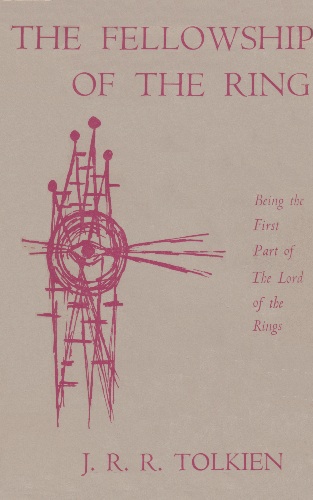
Link to all the Lord of the Rings covers.
Tags: tolkien
Posted in Book Reviews, Children's Books, Writing | No Comments »
Saturday, August 4th, 2018
Iona and Peter Opie were like the Brothers’ Grimm of the 1950s. Their fabulous book was The Lore and Language of Schoolchildren, an epic collection of children’s rhymes, riddles, superstitions, jeers, and customs, garnered from interviews with thousands of English children in the 1950s. Many of these rhymes and tricks persist in the playground today. Here are some gems from the Opie’s collection:
Pinch-me, Punch-me, and Steponmytoes,
Went down to the river to swim,
Two of the three were drowned,
Who do you think was saved?
Old Mr Kelly,
Had a pimple on his belly;
His wife cut it off,
It tasted like jelly.
When the war is over Hitler will be dead,
He hopes to go to heaven with a crown upon his head.
But the Lord said, No! You’ll have to go below,
There’s only room for Churchill, so cheery, cheery oh.
God made the bees
The bees make the honey;
We do the work,
The teacher gets the money.
Scab and matter custard,
Green snot pies,
Dead dog’s giblets
Dead cat’s eyes.
Hard boiled snails, Spread it thick
Wash it down with a cup of cold sick!
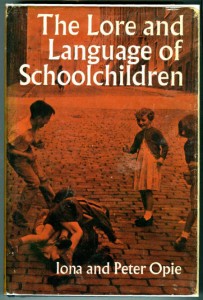
Tags: books, Grimm, poetry, reviews
Posted in Book Reviews, Children's Books | No Comments »
Sunday, July 8th, 2018
It’s really, really heartbreaking. But for some reason you want to read it again and again. It’s an extraordinary love story.– Michael Morpurgo
Almost every Sunday morning as a child I’d listen to Oscar Wilde’s short story, The Happy Prince (1888), on the radio and cry into my pillow so my brother nearby wouldn’t hear. A statue being stripped of his gold to feed the poor seems an unlikely plot for children. I didn’t understand all of Wilde’s lyrical language back then but the story shaped my values concerning wealth, poverty, and authority figures:
“The living always think that gold can make them happy.”
Listen to that radio version read by Robert Morley.
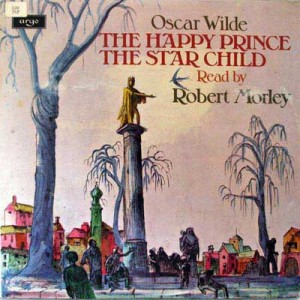
Tags: books, children's books, oscar wilde, reviews
Posted in Book Reviews, Children's Books | No Comments »
Saturday, June 9th, 2018
That touch of reality in a child’s life is a child’s comfort. The child gets the sense that this person who wrote this book knows about me and knows the world can be a troubling, incomprehensible place. Maurice Sendak
Outside Over There is my favourite Maurice Sendak picture book – – nobody else combined the real and the unreal so well. It’s a tale of separation and siblings (that features a creepy ice baby) and is both haunting and comforting. 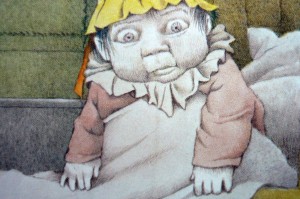
Sendak’s books can be exuberant (In the Night Kitchen), spiritual (Dear Mili), and funny (Pierre, a cautionary tale). I like his vision of atoms dancing to form molecules from the first book he illustrated (when 19 years old), Atomics for the Millions:
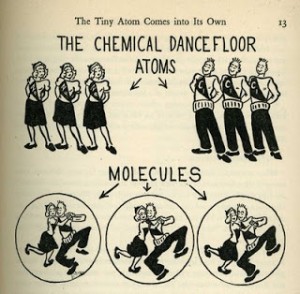
Tags: books, children's books, picture books, reviews
Posted in Book Reviews, Children's Books, Writing | 1 Comment »
Saturday, March 3rd, 2018
E.B. White wrote only three children’s books and two are America’s top books (Charlotte’s Web and Stuart Little). What was his secret? Imagination, yes, but he also took his time and revised a lot to refine his style. Charlotte’s Web is a short book but it took two years to write the first draft, then another year to rewrite it. It has the best opening line of any children’s book – “Where’s Papa going with that axe?”; and perhaps the finest ending (certainly the most heart-rending).
The ending is as beautiful, bold and full of integrity as Charlotte herself.– Guardian
In a Paris Review interview, White puts a witty spin on procrastination (which writers are good at):
Delay is natural to a writer. He is like a surfer—he bides his time, waits for the perfect wave on which to ride in. He waits for the surge (of emotion? of strength? of courage?) that will carry him along. I am apt to let something simmer for a while in my mind before trying to put it into words. I walk around, straightening pictures on the wall, rugs on the floor—as though not until everything in the world was lined up and perfectly true could anybody reasonably expect me to set a word down on paper.

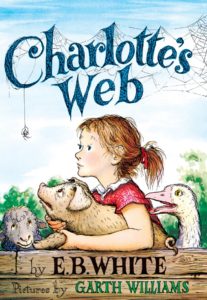
Tags: children's books, E B White, writers, writing
Posted in Children's Books, Writing | No Comments »
Thursday, February 1st, 2018
My recent essays:
Moomintrolls For Life, from Saplings magazine.
These books by Tove Jansson are the perfect children’s stories – thrilling, comforting, funny, profound…
The Presence of Trees, from Down In Edin magazine.
Trees are not only smart but are vital to the functioning of the planet’s natural cycles. Trees are also one of our few natural allies in the daunting fight against global warming.
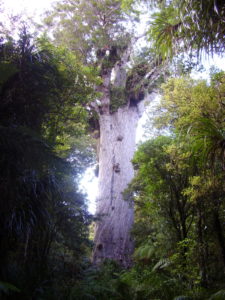
Tane Mahuta, 2000 year old kauri
Posted in Children's Books, Science | No Comments »
Sunday, January 7th, 2018
Books are sensory – they have a pleasing look, a comforting smell, a grainy feel, a satisfying weight. You can lend a book, read it everywhere, stow it anywhere, hide treasures in it. The best-loved books are dog-eared, coffee-stained, and inscribed: carrying memories locked into untold brain networks by all the experiences you had when reading it.
And forever after you have only to open that book to be back where you first read it. It will all come into your mind with the very first words…― Cornelia Funke (Inkheart)
A book works at my speed, comfortable and slow, faster when I want it to be, then slow again. Many of my books are old friends.– Jack Lasenby (interview here).
When you read a great book, you don’t escape from life, you plunge deeper into it….And for this serious task of imaginative discovery and self-discovery, there is and remains one perfect symbol: the printed book.– Julian Barnes
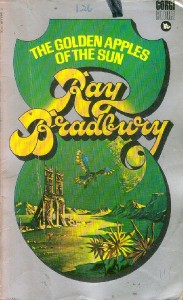
Tags: books, children's books, Reading, writers
Posted in Children's Books, Reading | 7 Comments »
Saturday, November 4th, 2017
My new Nature Stroybook, Gecko, is about a day in the life of a gecko, as he hunts for food in the jungle and is himself hunted by deadly predators. With stunning illustrations by Brian Lovelock and published internationally by Walker Books. Learn more about Geckos.
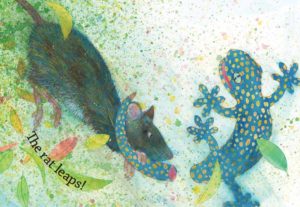
Tags: children's books, science
Posted in Children's Books, Science | No Comments »
Sunday, June 4th, 2017
Not another pirate picture book! Yes, but a beautifully offbeat one. Captain Slaughterboard Drops Anchor (1939) is a masterpiece of illustration by the artist/novelist Mervyn Peake (author of the intricate Gormenghast trilogy). His pirate Captain has a mid-life crisis on a weird pink island where he discovers ‘a creature as bright as butter’ who inspires him to ‘drop out’ (the creature looks ‘like Bob Dylan with cocker-spaniel ears’ – NY Times.) Peake’s son, Fabian, says his father always wanted to live on an island ‘living a bohemian life free from the pressures of modern society’. See more of Peake’s incredible illustrations.
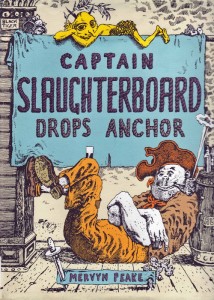
Tags: children's books, picture books
Posted in Book Reviews, Children's Books | No Comments »
Sunday, May 7th, 2017
The Day Boy and the Night Girl (1879) is a fairy tale by George MacDonald about a witch who raises two children in a bizarre experiment – the girl, Nycteris, never sees the sunlight, and the boy, Photogen, never sees the night. The two escape and meet at the twilight hour to help each other overcome their fears of dark and light. It’s an eerie romantic allegory which also subverts male/female fairy tale roles. MacDonald was an unorthodox preacher turned writer whose fantasy tales inspired both Tolkien and C.S. Lewis. My favourite is The Light Princess (1864) a witty story about a feisty princess who has lost her gravity – she floats like a helium balloon and can’t take anything seriously, even a prince who gives up his life for her.
MacDonald occupied a major position in the intellectual life of his Victorian contemporaries. His stories are profoundly experimental and subversive. – (The Complete Fairy Tales of George MacDonald)
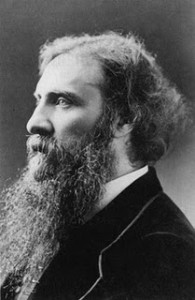
Tags: children's books, fairy tales
Posted in Book Reviews, Children's Books | No Comments »
Saturday, March 11th, 2017
The King of the Golden River (1841) by John Ruskin is a children’s morality tale that still speaks loudly. It’s unique among fairy tales in having a punchy environmental and social message as well as being highly atmospheric. It’s about two brothers who exploit the land and have no compassion for their workers:
They shot the blackbirds, because they pecked the fruit; and killed the hedgehogs, lest they should suck the cows; they poisoned the crickets for eating the crumbs in the kitchen; and smothered the cicadas, which used to sing all summer in the lime-trees.
Their fertile valley becomes a wasteland and is cursed by the Southwest Wind (illustration below by Richard Doyle). To break the curse the brothers must journey to the Golden River but they fail to help the people they meet on the way. Their younger brother cares for the needy and as a result is saved from the fate of his brothers.
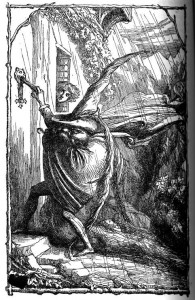
Tags: children's books, classics, fairy tales
Posted in Children's Books | No Comments »
Friday, December 16th, 2016
Would it be possible to find a more ungrateful boy, or one with less heart than I have! – Pinocchio
Pinocchio by Carlo Collodi (1882) is a rare thing: an archetypal story for children. The puppet-boy represents every disobedient, lazy child who must face life’s hardships, find parental love and grow up. It can also be read as a Christian allegory, a snapshot of society or as a myth. The language of this classic has barely dated. The best recent version is illustrated by Roberto Innocenti, capturing all the pathos of the tale – his iconic artwork combines painterly detail with cinematic angles. This dark, humourous adventure is a far cry from the sanitized (but beautiful!) Disney movie version.
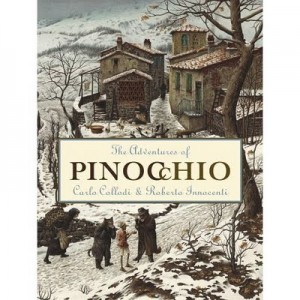
Tags: children's books, picture books, reviews
Posted in Book Reviews, Children's Books | No Comments »
Saturday, March 19th, 2016
William Steig, (creator of Shrek) has been called ‘one of the finest cartoonists and creators of children’s books’ (Jonathan Cott). He began writing for children at 60 and his stories are often uncompromising but always celebrate the richness of relationships and nature. Steig used sophisticated language to entertain readers rather than befuddle them. 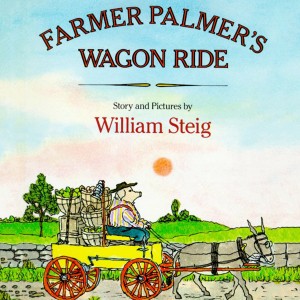
The picture book Farmer Palmer’s Wagon Ride is one of his most playful. A farmer-pig suffers a series of slapstick mishaps as he takes gifts home to his beloved family. I love his description of a rainstorm:
‘Harum-scarum gusts of wind … a drubbing deluge … thunder rambled and rumbled … it dramberamberoomed!’
Read the full article about William Steig and his books.
Tags: children's books, picture books, reviews, steig
Posted in Book Reviews, Children's Books, Humour | No Comments »


















